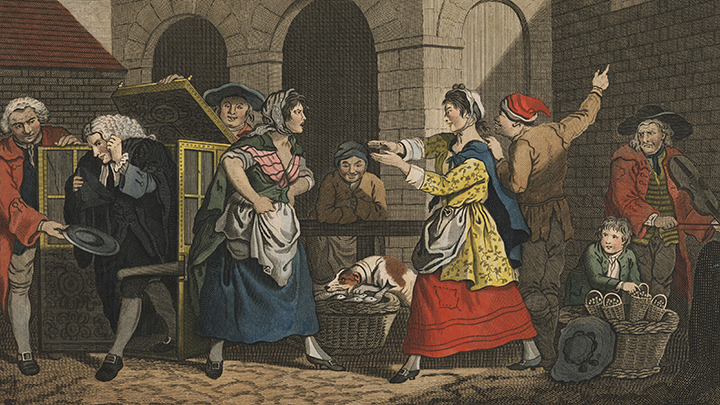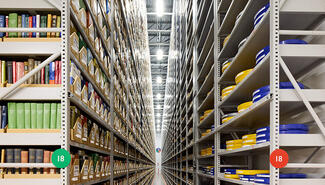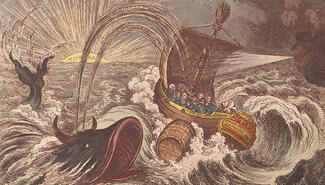Lewis Walpole Library’s political cartoons spark curiosity—and a conversation among collectors
On Thurs., Nov. 16, at 3 pm, in the International Room in Sterling Memorial Library, the Lewis Walpole Library will present “Caricature Collectors in Conversation.” A panel of distinguished private collectors and print curators will engage in lively conversation about their interests, expertise, and adventures in building their collections of 18th- and early 19th-century British caricature and satiric prints.
Political cartoons have been a “longtime mainstay of the Fourth Estate,” said Pulitzer Prize–winner Joel Pett of the Lexington Herald-Leader in a recent Washington Post article. Pett was commenting on the important role of editorial cartoons and the dwindling number being published in American newspapers today.
Political cartoons have circulated in print since the 18th century in Britain as a popular form of commentary on social, cultural, and political issues. During that same period, on the brink of the American Revolution, the colonists adopted the form to express their diverging views. “Political cartoons played a vital role in a free press that mediated cultural and political debate,” said Cynthia Roman, curator of prints, drawings, and paintings at Lewis Walpole Library.
The Lewis Walpole Library’s extensive collection of political cartoons attest to Britain’s long tradition. The library holds one of the largest and most important collections of 18th-century British visual satire outside the United Kingdom. The roughly 30,000 works on paper include more than 10,000 drawings, caricatures, satirical prints, and portrait and topographical prints, most of which are searchable in Quicksearch and Digital Collections.
The collection contains hundreds of important works by William Hogarth, George Cruikshank, James Gillray, Thomas Rowlandson, and other significant artists of the time.
There are also more than 1,200 “political and personal satires” in the library’s digital collections database. Three of these political cartoons, dating from the late 18th century and turn of the 19th, are among the most-viewed digital objects in the collection.
1. “The Political Cartoon for the Year 1775”
3. “Rainbow Tavern in Fleet Street in 1800”
“In building their collection of 18th-century caricature and satire prints,” Roman said, “W. S. Lewis and Annie Burr Auchincloss Lewis envisioned a collection that was essentially archival—a resource for a library dedicated to the life and times of Horace Walpole and to eighteenth-century studies. The prints remain a cornerstone for research at the library, where they are consulted by scholars and students from many disciplines.”
—Deborah Cannarella
Image: “The female orators,” printed for Jno. Smith, No. 35 Cheapside, and Robt. Sayer, No. 53 Fleet Street, engraved after an original picture painted by Mr. John Collet. Lewis Walpole Library



